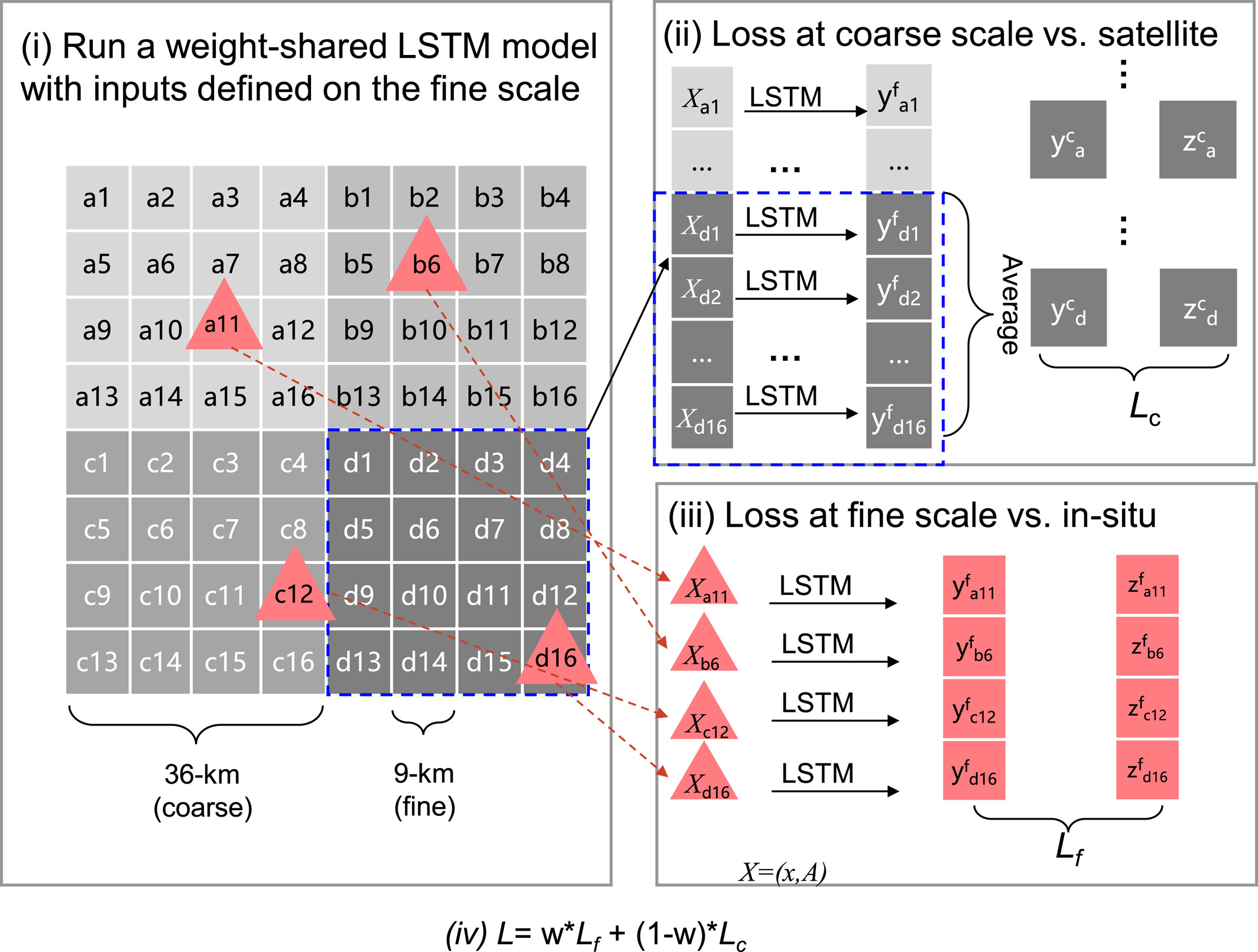Code¶
See below for coding projects developed by the community that utilize HydroDL
Differentiable Modeling Framework¶
- 𝛿MG (Lonzarich et al. 2024)
---
 A second-generation generic, scalable differentiable modeling framework on PyTorch for integrating neural networks with physical models. Coupled with HydroDL2, 𝛿MG enables hydrologic modeling like HydroDL while greatly expanding the range of applications and capabilities.
A second-generation generic, scalable differentiable modeling framework on PyTorch for integrating neural networks with physical models. Coupled with HydroDL2, 𝛿MG enables hydrologic modeling like HydroDL while greatly expanding the range of applications and capabilities.
Differentiable Models¶
-
\(\delta\) MC-Juniata-hydroDL2 (Bindas et al. 2024)
 A differentiable routing method that uses Muskingum-Cunge and an NN to infer parameterizations for Manning’s roughness
A differentiable routing method that uses Muskingum-Cunge and an NN to infer parameterizations for Manning’s roughness
-
\(\delta\) differentiable stream temperature (LSTM + SNTEMP) (Rahmani et al. 2023)
CONUS scale pearson correlation between baseflow estimation of our model and GAGES-II estimates of baseflow.
-
diffEcosys (Aboelyazeed_et_al_2023)
 A differentiable physics-informed ecosystem model
A differentiable physics-informed ecosystem model
-
\(\delta\) HBV-hydroDL (Feng et al., 2022,2023)
 Differentiable hydrologic models using HBV model as a physical backbone.
Differentiable hydrologic models using HBV model as a physical backbone.
-
\(\delta\) parameter learning (Tsai_et_al_2021)
 Differentiable Parameter Learning
Differentiable Parameter Learning
-
Updated, simplified \(\delta\)HBV tutorial for CAMELS streamflow
This notebook is a simplified \(\delta\)HBV code tutorial for CAMELS streamflow. Thanks to Yalan Song and Dapeng Feng. Note that different pytorch versions could lead to slightly different performances.
LSTM Models¶
-
Starting point: Quick LSTM tutorial on soil moisture prediction
This notebook is the starting point for new people to learn hydrologic time series prediction using deep neural networks. You can see how CudnnLSTMmodel and CpuLSTM models are trained and how data are formatted. Dataset is embedded in the hydroDL library so it is easy to run the example.
-
Updated, simplified LSTM tutorial for CAMELS streamflow
This notebook is the "high-flow expert" listed on the benchmark page. We greatly simplified the LSTM interface, making it easy to reuse this code on your data. This is slightly more involved than the soil moisture tutorial as we are dealing with a larger and more complex dataset. Thanks to Yalan Song, Kamlesh Sawadekar and Dapeng Feng. Note that different pytorch versions could lead to slightly different performances.
-
 A multiscale DL scheme learning simultaneously from satellite and in situ data to predict 9 km daily soil moisture (5 cm depth).
A multiscale DL scheme learning simultaneously from satellite and in situ data to predict 9 km daily soil moisture (5 cm depth).
-
LSTM for snow water equivalent (Song et al. 2023)
 Time series of the forward model and the models integrating snow water equivalent (SWE) and snow cover fraction (SCF) at different time lags.
Time series of the forward model and the models integrating snow water equivalent (SWE) and snow cover fraction (SCF) at different time lags.
-
LSTM stream temperature model (Rahmani et al. 2021)
CONUS scale aggregated metrics of stream temperature models for the testing time range considering observed, simulated, and no streamflow data among inputs,with a locally fitted auto-regressive model
Transformer Models¶
-
 First time Transformer achieved the same performance as LSTM on CAMELS dataset; LSTMs and Transformers are likely nearing the prediction limits of the dataset.
First time Transformer achieved the same performance as LSTM on CAMELS dataset; LSTMs and Transformers are likely nearing the prediction limits of the dataset.